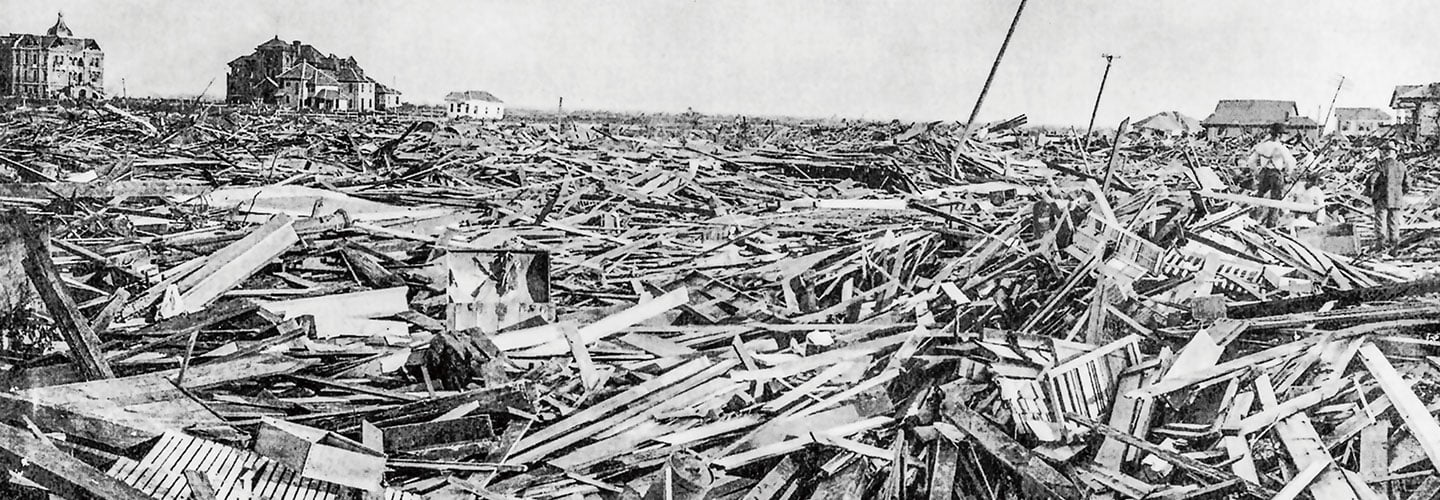Courtesy of Peter Flagg Masson
Harry Masson
Galveston, Texas, was drowning.
It was Saturday, September 8, 1900. The city was being torn to pieces by a violent hurricane. Thousands of people were dead.
Harry Maxson, 14, stood at the window of his house. Outside, the ocean was like an angry beast devouring his neighborhood. It was swallowing up trees. It was tearing houses apart. Harry’s ears hurt from the sound of the screaming wind.
Then Harry heard another sound.
“Help me!”
A woman was in danger. She was calling from somewhere outside.
Harry could barely swim. How could he help anyone?
“Please! Come and save us!” the woman cried.
Harry took a breath. He had to rescue that woman, even if it cost him his life.
Galveston, Texas, was drowning.
It was Saturday, September 8, 1900. A hurricane was tearing the city to bits. Thousands of people were dead.
Harry Maxson, 14, stood at the window of his house. Outside, the ocean was like an angry beast devouring his neighborhood. It was swallowing up trees and tearing houses apart.
The wind was loud. It hurt Harry’s ears.
Then Harry heard another sound: “Help me!”
A woman was in danger. She was somewhere outside.
Harry could barely swim. How could he help anyone?
“Please! Come and save us!” the woman cried.
Harry took a breath. He had to rescue that woman, even if it cost him his life.
Galveston, Texas, was drowning.
It was September 8, 1900, and the city was being torn to pieces by a violent hurricane.
Thousands of people were dead.
Harry Maxson, 14, stood at the window of his house. Like an angry beast, the ocean was devouring his neighborhood, swallowing up trees and tearing houses apart. Harry’s ears hurt from the sound of the screaming wind.
Then Harry heard another sound.
“Help me!”
A woman was in danger. She was calling from somewhere outside.
Harry could barely swim. How could he help anyone?
“Please! Come and save us!” the woman cried.
Harry took a breath. He had to rescue that woman, even if it cost him his life.

